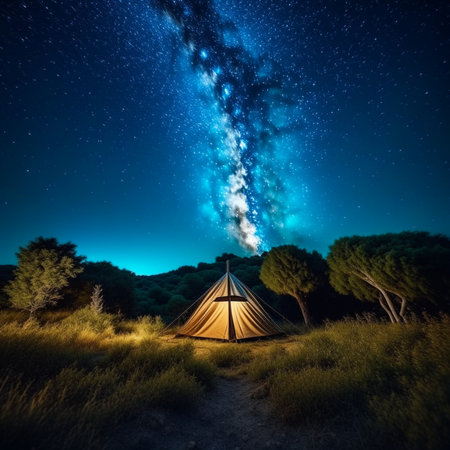Historical Eclipse Traditions across the British Isles
The mysterious dance between sun and moon has always sparked awe in the hearts of those living on the British Isles. From misty highlands to ancient stone circles, eclipses were once seen as profound omens, shaping both ritual and belief. The Celts, with their deep reverence for nature’s cycles, perceived eclipses as powerful portals between worlds—a time when the veil thinned, allowing ancestral spirits to whisper guidance or warnings. Druidic ceremonies might involve lighting sacred fires or chanting beneath ancient oaks, seeking protection and wisdom during these charged moments.
In the Anglo-Saxon era, eclipses were often woven into tales of fate and kingship. Chronicles from this period recount how a darkened sun could signify great change: the rise or fall of rulers, or divine displeasure. Villagers might gather in communal spaces, clutching talismans or reciting prayers taught by Christian monks—yet still tinged with older, pagan echoes. Stories handed down in hushed tones spoke of mischievous spirits or monstrous wolves swallowing the sun, inspiring protective rituals such as banging pots and pans to chase away darkness.
Across Scotland, Ireland, Wales, and England alike, local folklore painted each eclipse with its own brushstroke of meaning. Fisherfolk along the rugged coasts might stay ashore, believing eclipses unsettled the tides and lured out restless sea spirits. In rural hamlets, wise women interpreted shadowed skies as signals for sowing or reaping—aligning daily life with celestial rhythms. This patchwork of customs speaks to a shared yearning: to find comfort and understanding in cosmic events that felt both intimate and immense.
Though centuries have passed, whispers of these traditions still linger in place names, family stories, and seasonal gatherings. Each eclipse remains a reminder of our ancestors’ gentle attentiveness to sky and earth—a legacy that continues to enchant astrologers and stargazers today.
2. Modern Eclipse Observances and Rituals
In today’s British Isles, eclipses continue to captivate hearts and minds, weaving together the threads of science, community, and a gentle sense of wonder. While much has changed since ancient times, the collective experience of an eclipse remains profoundly unifying—whether it’s through astronomical curiosity or spiritual reflection.
Astronomy Clubs and Scientific Gatherings
Modern eclipse events often see astronomy clubs across the UK hosting special gatherings. From the Royal Observatory in Greenwich to small local societies in Yorkshire or Cornwall, telescopes are set up in parks, school fields, and on historic hillsides. Members share detailed star charts over tea and ginger biscuits, guiding newcomers through safe viewing practices and sharing stories beneath the dimming sky. These events blend education with community spirit, offering a space for both seasoned stargazers and curious families to marvel at celestial mechanics.
Table: Typical Features of Modern Eclipse Events in the British Isles
| Type of Gathering | Main Activities | Common Locations |
|---|---|---|
| Astronomy Club Meetups | Telescopic viewing, expert talks, safety briefings | Parks, observatories, historical sites |
| Spiritual Circles | Meditation, ritual circles, intention-setting ceremonies | Sacred sites (e.g., Stonehenge), private gardens |
| Public Viewings | Community picnics, educational workshops for children | Village greens, school playgrounds |
Spiritual Communities and Personal Rituals
Beyond scientific observation, many Britons are drawn to the more mystical side of eclipses. Contemporary pagan and druidic groups gather at ancient stone circles—Avebury or Stonehenge—to honour the cosmic dance of shadow and light. Rituals might involve silent meditation as darkness falls or collaborative chanting to mark this rare alignment of sun and moon. Some choose quieter observance: lighting candles at home or journaling intentions inspired by astrological energies.
Local Flavour: The British Approach to Eclipse Rituals
The British way is often understated yet deeply meaningful—a flask of strong tea shared among friends on a chilly hillside, or a thoughtful pause during a busy day to watch the changing light from one’s window. Whether rooted in science or spirit, these rituals reflect a gentle reverence for nature’s mysteries and an enduring sense of connection to both land and cosmos.

3. Sites of Eclipse Magic: Sacred Locations and Landscapes
The British Isles are woven with ancient places where the veil between earth and sky feels tantalisingly thin, especially during celestial events such as eclipses. These sacred sites—Stonehenge, Glastonbury Tor, and the Callanish Stones—have long played host to eclipse rituals, their stones and hills whispering stories of generations who gathered beneath shadowed suns and veiled moons.
Stonehenge: The Solar Altar
No discussion of eclipse magic in Britain would be complete without Stonehenge. This world-renowned monument on Salisbury Plain aligns with both the solstices and lunar cycles, drawing seekers and celebrants for thousands of years. During an eclipse, the ancient stones seem to awaken, their colossal presence framing the cosmic dance above. Modern Druids and astrology enthusiasts still gather here, draping the silence with chants and intentions as they honour both ancestral wisdom and the astrological significance of these fleeting shadows.
Glastonbury Tor: The Heart Chakra of Albion
Further west rises Glastonbury Tor, its iconic silhouette crowned by the tower of St Michael. Shrouded in Arthurian legend and spiritual lore, this hill is considered by many to be a power centre—or even the heart chakra—of Britain. During eclipses, pilgrims ascend its slopes, meditating on transformation and personal rebirth under shifting skies. Astrologically, Glastonbury’s ley lines are believed to amplify intentions set during eclipse rituals, making it a beloved destination for those seeking cosmic connection.
The Callanish Stones: Lunar Guardians of the North
Far to the north in Scotland’s Outer Hebrides stand the enigmatic Callanish Stones. These ancient megaliths are intimately tied to lunar cycles; some archaeologists believe their very placement maps out major moonrises and sets. Locals and visitors alike have long observed celestial phenomena here, weaving together folklore, astrology, and quiet reverence during eclipses. The rugged landscape adds a wild poetry to ritual gatherings—a reminder that magic often blooms at the edge of civilisation.
Each of these hallowed locations continues to serve as a bridge between past and present. Whether you’re drawn by astrological curiosity or ancestral yearning, standing amidst these stones during an eclipse invites you into a lineage of wonder—a uniquely British blend of history, myth, and star-guided hope.
4. Astrological Significance of Eclipses in British Tradition
Within the tapestry of British folklore and cultural heritage, eclipses have always been more than mere astronomical events—they shimmer with astrological meaning. British astrologers, both past and present, approach eclipses as potent harbingers of change, often weaving their interpretations into the wider narrative of national identity and personal transformation. The United Kingdom’s unique blend of ancient Druidic wisdom, medieval cosmology, and modern astrology gives rise to a nuanced perspective that echoes through both public discourse and private contemplation.
The Astrologer’s Lens: National and Personal Impact
In Britain, eclipses are often analysed not only for their effect on individuals but also for their broader implications for the nation itself. Renowned astrologers such as William Lilly during the English Civil War era, and contemporary voices like Deborah Houlding, have explored how eclipse paths crossing the Isles might symbolise turning points in leadership, governance, or even collective morale. On a personal level, Britons are encouraged to reflect on where an eclipse falls in their natal chart—whether it touches a sensitive angle or planetary placement, hinting at shifts in career, relationships, or inner growth.
Key Eclipse Interpretations in British Astrology
| Eclipse Type | Traditional Meaning | Modern British Perspective |
|---|---|---|
| Solar Eclipse | Signifies new beginnings; historically seen as omens for kings and leaders | A time for collective renewal; may herald political or societal shifts |
| Lunar Eclipse | Associated with endings or revelations; linked to emotions and the populace | Encourages emotional release; prompts reflection on community wellbeing |
Eclipses in Local Culture and Language
The resonance of eclipses extends into British local culture—expressions like “eclipsed by events” capture their metaphorical weight. In rural communities from Cornwall to the Highlands, traditional eclipse rituals blend with astrological customs: people gather at ancient stone circles or coastal cliffs to witness these celestial spectacles, often sharing insights about their astrological significance over a cup of tea or at a village pub. This fusion of sky-watching and star-reading continues to shape how Britons relate to eclipses—not merely as fleeting shadows but as cycles guiding both public life and private destiny.
5. Eclipse Symbolism in British Literature and Art
The profound allure of eclipses has long captured the British imagination, weaving its way through the nation’s poetry, literature, and visual arts. In medieval chronicles and Shakespearean drama alike, eclipses often symbolise foreboding change or cosmic intervention—a motif reflecting both awe and apprehension. For example, in Shakespeare’s “King Lear,” the eclipse is a harbinger of chaos and turmoil, mirroring the emotional upheaval within the play. This interplay between celestial events and human affairs speaks to the deep spiritual resonance that eclipses held for writers and audiences alike.
In the poetic tradition, figures like William Wordsworth and Thomas Hardy used eclipse imagery to explore themes of transformation, uncertainty, and introspection. Wordsworth’s reflections on nature’s mysteries frequently invoke the eclipse as a metaphor for moments when clarity is obscured, inviting a journey inward toward self-discovery. Hardy, meanwhile, saw eclipses as emblems of fate’s unpredictable hand—moments when destiny casts its shadow over ordinary life.
Visual artists from J.M.W. Turner to contemporary creators have depicted eclipses as both sublime spectacles and symbols of transition. Turner’s dramatic skies evoke not only natural wonder but also the shifting tides of British history and identity. Through their palettes and brushstrokes, artists suggest that an eclipse is more than a fleeting astronomical event: it is a liminal passage bridging old certainties with new possibilities.
Within these creative realms, the eclipse becomes a vessel for expressing collective hopes, anxieties, and yearnings—a reflection of Britain’s evolving spiritual landscape. It encapsulates moments when familiar worlds are momentarily veiled, asking both creator and observer to pause and ponder what lies beyond the visible horizon.
Astrologically speaking, such artistic interpretations echo traditional beliefs about eclipses as catalysts for revelation and renewal. Whether in verse or canvas, the enduring presence of eclipse symbolism in British culture invites us to embrace times of darkness as opportunities for insight—a gentle reminder that even as light wanes, transformation quietly begins.
6. Personal Eclipse Rituals for Today’s Britons
As celestial events like eclipses continue to inspire awe, many Britons seek ways to honour these moments in ways that feel both personally meaningful and deeply connected to the land’s heritage. Whether you’re drawn by astrology, tradition, or a sense of community, observing an eclipse can be a gentle act of reflection and renewal. Here are some inclusive and practical ideas for marking this occasion, rooted in the rich tapestry of British custom and contemporary mindfulness.
Honouring Nature’s Cycles
Britain’s ancient peoples often gathered at sacred sites—stone circles, hilltops, or riversides—to mark astronomical events. Today, consider visiting a local green space, coastline, or historical landmark as your chosen spot. Quietly observe the changing light, listen to birdsong, and let yourself feel part of the timeless rhythm of nature. If you’re unable to venture out, open your windows or step into your garden; even a simple houseplant can serve as a touchstone for grounding yourself during the eclipse.
Reflective Journaling and Intention Setting
Eclipses are powerful times for introspection. Take a moment to write down what you wish to release from the past cycle and what you hope to invite in moving forward. Drawing inspiration from traditional British folklore—which often viewed eclipses as moments of transformation—you might pen your intentions on recycled paper or even biodegradable parchment, then safely burn or bury them as a symbolic gesture of renewal.
Community Connection and Sharing
If you’re part of a family or community group, gather together (in person or virtually) to share stories about past eclipses or reflect on how the cycles of the Moon have shaped British culture through poetry, song, or storytelling. Preparing a simple meal using seasonal British produce can add warmth and nourishment to your gathering—think classic scones with jam, or hearty vegetable soup.
Astrological Alignment
For those attuned to the stars, check which zodiac sign the eclipse falls in and reflect on its personal meaning for you. Invite friends to draw cards from an oracle deck inspired by British wildlife or folklore, sparking conversation about growth and change under the shifting sky.
Inclusive Mindfulness Practice
Above all, eclipse rituals need not be elaborate. Light a candle with intention, meditate on gratitude for the beauty of this land, or simply pause in stillness as shadow passes across sun or moon. However you choose to observe it—alone or with others—let this celestial event remind you that we are each threads in Britain’s living story: curious, resilient, and ever-evolving beneath the same wide sky.


